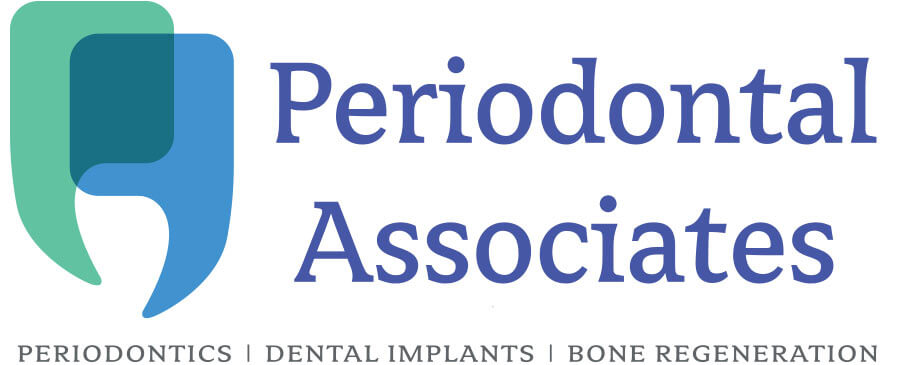
Periodontal disease is a serious gum infection that can damage gums, destroy jawbone, loosen teeth or even cause the loss of one or more teeth. Fortunately, periodontal treatment can stop the disease before it causes significant damage.
What is Periodontal Disease?
Periodontal disease usually starts as the result of plaque, which is a sticky film composed mainly of bacteria. Plaque forms when the starches and sugars in food combine with bacteria that live in the mouth. Plaque can cause gingivitis, an early form of periodontal disease that causes swollen, tender and bleeding gums. Brushing easily removes plaque.
When left in place, plaque hardens into a hard-to-remove tartar that irritates the gums to cause inflammation, which can cause pockets to develop between teeth and gums. Plaque, tartar and bacteria can fill the pockets, causing the pockets and infection to deepen. Left untreated, deep infection can destroy tissue and bone, which allows teeth to loosen or fall out. Dentists refer to this late stage of periodontal disease as periodontitis.
Treatment for Periodontal Disease
Treatment for periodontal disease depends largely on the stage and severity of the gum infection. Periodontists, who are dentists with advanced training in the diagnosis and treatment of periodontal disease, may suggest non-surgical or surgical treatments.
Non-surgical treatments for periodontal disease
In its early stages, periodontal disease often responds well to less invasive, non-surgical treatments.
Scaling
In this procedure, the periodontist uses special instruments, ultrasonic devices or even lasers to remove tartar and bacteria from the surfaces of teeth and beneath the gums.
Root planing
During root planing, the periodontist uses special tools to smooth the root surfaces, which discourages the further buildup of bacteria and tartar. Root planing also removes any bacterial byproducts that may contribute to inflammation, slow down healing, or delay the reattachment of the gum back onto the surface of teeth.
Antibiotics
Topical or oral antibiotics can help control bacterial infection. Topical antibiotics involve rinsing with antibacterial mouthwashes or inserting antibiotic gels into the pockets between teeth and gums. Oral antibiotics may be necessary to eliminate infection-causing bacteria.
Surgical treatments
Surgical treatments may be necessary to treat advanced periodontitis.
Flap surgery
Also known as pocket reduction surgery, flap surgery exposes the roots for more effective scaling and root planing. To perform flap surgery, the periodontist makes several incisions in the gum to allow a section of gum tissue to be gently pulled back to expose the roots for scaling and root planing. In cases of bone loss, the periodontist recontours the underlying bone before suturing the gum tissue back in place after flap surgery.
Soft tissue grafts
The loss of gum tissue causes the soft tissue of the gumline to recede. Treatment for receding gumline involves reinforcing the damaged soft tissue with tissue taken from other sources, such as from the roof of the patient’s mouth or from another donor source. Soft tissue grafts help prevent the gum from receding more; it can also cover exposed roots and give teeth a more pleasing aesthetic appearance.
Bone grafting
Bone grafting is necessary when periodontal disease has destroyed bone surrounding tooth roots. This procedure involves replacing damaged bone with small fragments of the patient’s bone, synthetic bone, or donated bone. The graft also holds the tooth in place and supports the regrowth of natural bone.
Periodontists may also perform advanced procedures, such as guided tissue regeneration and tissue-stimulating proteins. For more information about the treatment of periodontal disease, consult with a dentist or periodontist.Call (508) 875-6185 today to schedule an appointment at our Framingham office or (617) 964-6185 for our Newton Centre office. We look forward to providing you with top quality periodontal care.
